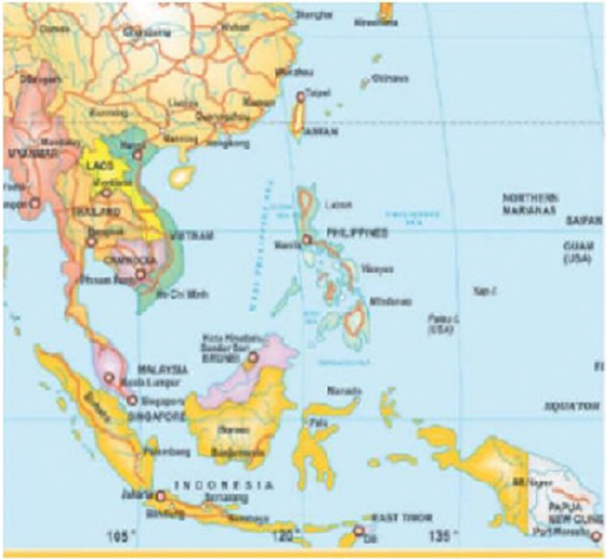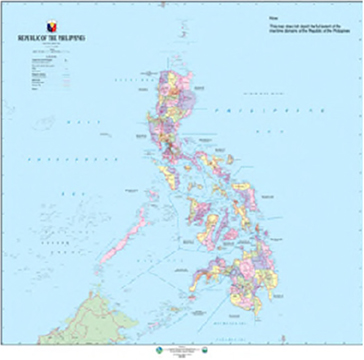Consumer Price Index
The discussion below is based on the 2018 CPI basket, except for 2017 and 2018, which are based on the 2012 CPI basket.
The average inflation rate for 2017 was 2.9%, higher than the 1.3% average inflation rate in 2016. The higher rate of inflation in 2017 was mainly due to higher growth in the price indices of all commodity groups except for education.
The average inflation rate for 2018 was 5.2%, higher than the 2.9% average inflation rate in 2017. The higher rate of inflation in 2018 was due to higher growth in the price indices of all commodity groups except for clothing and footwear, communication and education. The price index for clothing and footwear recorded an average inflation of 2.4% in both 2017 and 2018. The price index for education recorded an average deflation of 0.8 in 2018, compared to an average inflation of 2.5 in 2017.
The average inflation rate for 2019 was 2.4% based on the 2018 CPI basket. The rate of inflation in 2019 was due mainly to decreases in the price indices of food and non-alcoholic beverages, alcoholic beverages and tobacco, housing, water, electricity, gas, and other fuels, transportation, restaurant and miscellaneous goods and services.
The average inflation rate for 2020 was 2.4%, unchanged from the rate in 2019. Inflation in 2020 saw growth in the price indices of food and non-alcoholic beverages at 2.7% in 2020 as compared to 2.1% in 2019, which was offset by lower growth in the price indices of housing, water, electricity, gas, and other fuels at 0.9% in 2020 and restaurants and miscellaneous goods and services at 2.4% in 2020 as compared to 2.4% and 3.4%, respectively, in 2019.
The average inflation rate for 2021 was 3.9%, higher than the average inflation rate of 2.4% in 2020, based on the 2018 CPI basket. The higher rate of inflation in 2021 was due mainly to increases in the rates of inflation for food, transport, and housing, water, electricity, gas, and other fuels from 2.9%, 1.5%, and 0.7%, respectively, in 2020 to 4.5%, 9.3%, and 2.5%, respectively, for 2021.
The average inflation rate as of July 2022 was 4.7% based on preliminary data, higher than the average of 3.9% for the same period in 2021. The upward trend was due mainly to the higher annual growth rate in the price index for food and non-alcoholic beverages at 6.9%, followed by growth in the price index for transport at 18.1%. The following increases to price indices during the period also contributed to the increase in average inflation rate during the period: alcoholic beverages and tobacco, 8.5%; clothing and footwear, 2.5%; furnishings, household equipment and routine household maintenance, 3.1%; recreation, sport and culture, 2.2%; restaurants and accommodation services, 3.4%; and personal care and miscellaneous goods and services, 2.8%. This was partially offset by decreases in the indices of housing, water, electricity, gas and other fuels; and health of 5.7% and 2.4%, respectively. According to the Bangko Sentral, the further rise in inflation was due mainly to supply constraints, particularly in food and the continued elevated prices of oil in the international market. The Russia-Ukraine conflict also exacerbated conditions in the global commodities markets, which had already been struggling with soaring prices, supply-chain disruptions, and the continuing fallout from the COVID-19 pandemic.
Producer Price Index
In January 2021, the 2018 PPI basket was released. The PSA rebased 2019 and 2020 PPI to base year 2018. The Government stopped reporting inflation figures based on the 2000 PPI basket in January 2021. The discussion below is based on the 2018 PPI basket, except for 2017 and 2018, which are based on the 2000 PPI basket.
In 2017, the producer price index recorded average deflation of 0.9%, a lower rate of deflation than the average deflation of 4.9% recorded in 2016. The price indices for petroleum products, iron and steel, basic metals, machinery excluding electrical and non-ferrous metals, posted average inflation of 15.4%, 7.8%, 3.7% and deflation of 2.6% and 0.2%, respectively, in 2017, compared to deflation of 10.5%, 4.8%, 8.2%, 16.3% and 12.1%, respectively, in 2016. The price indices for fabricated metals, cement, leather products and non-metallic mineral products contracted by 38.1%, 15.4%, 16.3% and 6.4%, respectively, in 2017, compared to deflation of 6.3%, inflation of 1.8%, deflation of 3.8% and inflation of 2.6%, respectively, in 2016. The price indices for food manufacturing, beverages, textiles, furniture and fixtures, paper and paper products, chemical products (excluding plastic products), miscellaneous metallic mineral products and miscellaneous manufacturing also recorded contractions in 2017.
In 2018, the producer price index recorded average inflation of 0.7%, a reversal from the average deflation of 0.9% recorded in 2017. The price indices for beverages, tobacco and non-metallic mineral products posted average inflation of 14.7%, 41.1% and 7.7% in 2018, respectively, compared to an average deflation of 1.0%, an average inflation of 8.9% and an average deflation of 6.4% in 2017, respectively. The price indices for leather products, furniture and fixtures and fabricated metals posted average deflation of 8.7%, 4.6% and 8.3% in 2018, respectively, compared to an average deflation of 16.3%, 20.2% and 38.1% in 2017, respectively.
D-45

